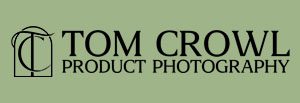In product photography, the spotlight often shines on the technical side—lighting, camera settings, and composition.
But what about the styling?
How you present the product can make all the difference between a photo that grabs attention and one that falls flat.
Good product styling not only improves your images but also helps tell a story, creating a connection with your audience.
On the other hand, poor styling choices can ruin an otherwise flawless shot.
So, what are the common product styling mistakes you need to avoid?
I’ll take you through the most frequent styling pitfalls and offer practical tips to make your photos don’t just look good—they connect with your customers.
Key Takeaways:
◈ Learn why simplicity is key in product styling.
◈ Discover the importance of maintaining consistency across your images.
◈ Understand how to choose props that enhance, not distract from, your product.
◈ Find out how to match lighting to your product’s story.
◈ Get tips on using space and composition effectively to showcase your product.
Overcomplicating the Setup
- Less is More
One of the biggest mistakes in product styling is adding too many props or details. A busy scene distracts from the product. - Simple Wins
A clean, minimalist setup helps focus attention on the product. A single well-chosen prop can make a stronger impact. - Pro Tip:
Stick to 1-3 props that complement your product. For example, a vase, a textured cloth, or a neutral surface can highlight a product without overwhelming it.
Inconsistent Styling Across Images
- Visual Consistency
Inconsistent styling across your images confuses customers and weakens brand identity. - Build a Cohesive Look
Use the same props, color palettes, and lighting styles to create a seamless experience for your audience. - Pro Tip:
Choose props and colors that reflect your brand’s message. Minimalist brands should keep things simple, while luxury brands can use rich, elegant elements.
Misuse of Props
- Choose Props Wisely
Irrelevant or distracting props shift focus away from the product. Every prop should add to the product’s story. - Props Should Complement
The right props support the product, not overshadow it. For instance, eco-friendly brands should use natural elements, while tech products need clean, modern backdrops. - Pro Tip:
Create a list of props based on the type of product. Handmade goods may need rustic props, while gadgets benefit from sleek, futuristic elements.
Ignoring the Audience’s Preferences
- Know Your Audience
Styling should reflect what your customers expect. A luxurious watch should be styled elegantly, while eco-friendly products need a natural, sustainable look. - Style for Your Market
Misaligned styling misses the mark. Always think about what your audience prefers when deciding on props, colors, and setups. - Pro Tip:
Research your audience to understand their preferences. Tailor your props and colors to their lifestyle and expectations.
Lighting Misalignment with Styling
- Lighting Sets the Mood
Lighting isn’t just technical; it tells a story. Use soft lighting for cozy products and sharp lighting for high-tech items. - Match Lighting to the Product’s Story
Poor lighting choices can confuse your audience. Always adjust your lighting to match the narrative of the product. - Pro Tip:
Soft, diffused lighting works best for lifestyle products, while bright lighting fits tech or luxury items.
Neglecting to Define a Clear Story
- Every Product Needs a Story
Without a narrative, product photos feel bland. Styling should give the product context and purpose. - Craft a Narrative
Decide if your product’s story is about luxury, innovation, or something else. Then style everything to reflect that. - Pro Tip:
Define the product’s story before starting the styling process. Every prop and lighting choice should fit within that narrative.
Poor Use of Space and Composition
- Avoid Clutter
Overloading the frame with props can overwhelm the product. On the flip side, too much empty space can make the image feel unfinished. - Balance is Key
Composition should naturally guide the viewer’s eye to the product using techniques like the rule of thirds or leading lines. - Pro Tip:
Use the rule of thirds to position your product off-center, drawing attention to it without overwhelming the scene.
Avoid These Mistakes to Transform Your Photos
Avoiding these common mistakes—overcomplicating setups, inconsistent styling, misuse of props, ignoring your audience, misaligned lighting, neglecting story, and poor composition—will help you improve your product photography.
Good styling isn’t just about aesthetics; it’s about creating a visual narrative that connects with your audience.
Follow these tips, refine your styling, and watch your product photos become more impactful.
Discover How Professional Photography Can Elevate Your Brand
Get a Custom Quote Tailored to Your Specific Needs

Take a minute to fill out the form below. Doing so will help me understand your product photography needs. Once I receive your information, I'll reach out to you personally to discuss the project in more detail and create a customized quote for you.
You may also text me at: 410-596-4127 or E-mail me at: tom@tomcrowl.com


